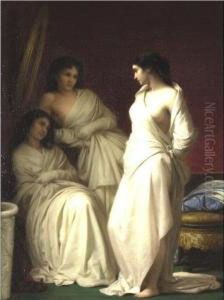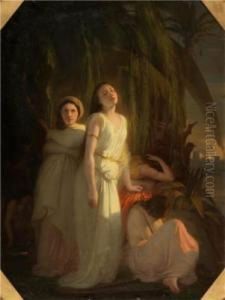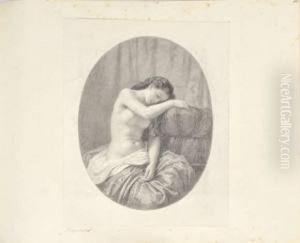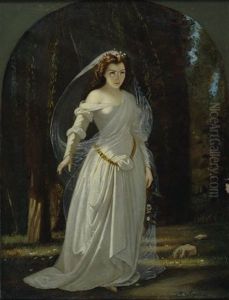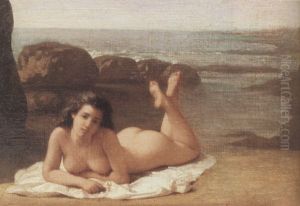Michele Rapisardi Paintings
Michele Rapisardi was an Italian painter born on December 5, 1822, in Catania, Sicily, into a family with a rich artistic background. His father, Giuseppe Rapisardi, was a modest but respected painter, providing Michele with an early exposure to the arts. Rapisardi initially studied at the Royal Institute of Fine Arts in Naples, where he honed his skills and developed a passion for the Neoclassical style, which was prevalent during that period. However, as his career progressed, he became more influenced by the Romantic movement, integrating its emphasis on emotion and individualism into his works.
Rapisardi's talent and dedication to art led him to Rome, a hub for artists seeking inspiration during the 19th century. In Rome, he immersed himself in the study of classical art and history, which profoundly influenced his later works. Rapisardi became known for his historical and mythological paintings, characterized by their dramatic intensity and meticulous attention to detail. His ability to convey complex emotions and narratives through his paintings earned him considerable acclaim.
Throughout his career, Michele Rapisardi received numerous commissions from both private patrons and public institutions. He was particularly celebrated for his frescoes, which adorned many significant buildings in Sicily, including the Palazzo Municipale in Catania and the Church of San Giuliano. Despite his success, Rapisardi's life was not without challenges. He experienced periods of financial difficulty and struggled to gain the recognition he felt he deserved from the Italian art establishment.
Rapisardi was also an influential teacher, passing on his skills and knowledge to a new generation of artists. He taught at the Royal Academy of Fine Arts in Catania, where he had a profound impact on the development of Sicilian art in the late 19th century. His legacy includes not only his own artworks but also the inspiration and guidance he provided to his students.
Michele Rapisardi died on April 6, 1886, in Florence. Despite the ups and downs of his career, he left behind a significant body of work that continues to be admired for its emotional depth, technical skill, and historical importance. Today, Rapisardi is remembered as one of Sicily's most important artists, a key figure in the transition from Neoclassicism to Romanticism in Italian art.
